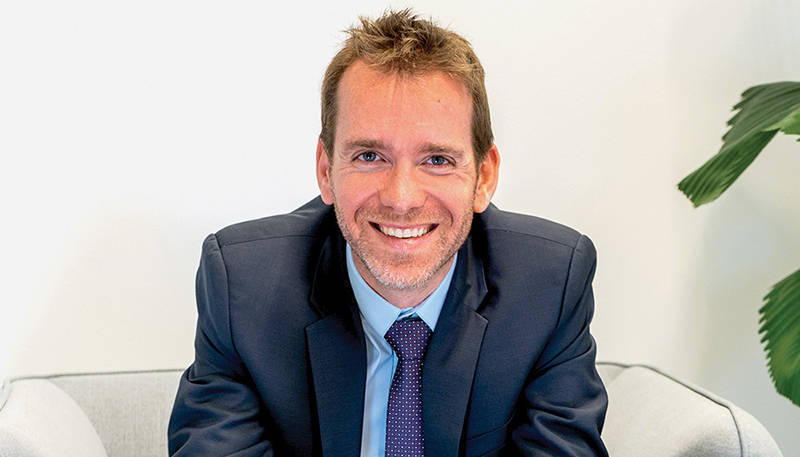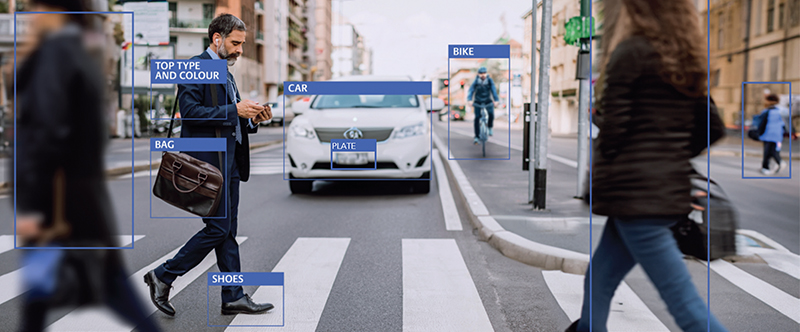 Security system product marketing has been focusing on AI for a couple of years now, but what is the reality of the technology, who’s using it and why? We caught up with an expert to find out…
Security system product marketing has been focusing on AI for a couple of years now, but what is the reality of the technology, who’s using it and why? We caught up with an expert to find out…
The security sector is very much like the consumer technology market in that it only takes one new development to come along and gain some traction and the whole industry then makes it a focus of its R&D. We saw this with the rush to higher resolution cameras, video doorbells and multi-sensor fire detectors. The latest “big thing” in the sector is AI, already gaining a strong reputation in the consumer market particularly in academia, but what is its role in security?
Gerard Figols is the President of i-PRO EMEA, so sits at the top of a business that has seriously invested in AI. In fact, the company recently launched the X-series, a line of cameras that turn non-AI network cameras into AI smart devices. The new range also supports AI on-site learning of custom, user-defined objects with analytics. With support for up to nine AI applications, it is described as the most powerful AI camera to date from i-PRO as well as on the market. Therefore, Gerard is the ideal person for us to quiz about AI:
How has AI driven the direction of the security market?
Before AI came into the security sector, we had developed analytics for CCTV but there was always the problem of the accuracy of the data. When you stop and think about it, the security industry is currently in a transformation phase like it was with the move from analogue to IP, the digitalisation of the security industry, when we went from a closed circuit to an open network. That change began in the 2000s and today we are experiencing the same shift with the AI era coming in. What people need to realise is that there are many uses for the information gained from a security camera, beyond security. Cameras are essentially data gathering devices and how you use this information and how beneficial it can be is very much dependent on the accuracy of the data. If the data is not accurate then the analytics cannot do its job.
So, what AI is now doing is helping users to have much more accurate data and not just enhancing security but also improving the operational efficiency of the business. We need to think of the units not as cameras but as IoT sensors and so, as such, a lot of companies like i-PRO are putting in additional investment into R&D with AI solutions. As a business we are very data driven and recognise the value of accurate information, which is why we now have more than 200 cameras with AI capabilities on the edge, whereas two years ago we had none.
How easy is it to upgrade legacy systems to AI?
This is an issue that we are very aware of. When technology evolves there is always a concern about what happens to the existing system that is in place. When cameras are already installed it means there has been a level of investment, so this is one of our priorities and remains at the forefront of our mind when we develop new technology. To address this we have launched a new range of cameras that converts three non-AI into AI capable units by running video through one of the new cameras. In this way all legacy systems can be easily upgraded with minimum investment with benefits that prove invaluable.

Given that, how should installers promote AI to their customers?
While the term AI has been used to market the technology to date, I think a more suitable name is deep learning. The advantage of AI-led analytics is that the technology can learn for itself and improve the performance and efficiency of the analytics package. Without the AI element the analytics is just an algorithm that will continue to perform in exactly the same way, doing the same job – not improving as it proceeds. With deep learning it can keep enhancing and improving the accuracy of the data being gathered. If your customers don’t get the correct data, then all the decisions they are going to make as a company are going to be wrong. That is a very strong message that installers can pass on to end users to help them understand, firstly the difference between AI and analytics and then also the benefits of deep learning.
How easy is it to use and initiate AI camera functions?
It is not difficult to start using deep learning. We have a number of applications that have been developed with partners to enable you to gain insights on the scene, depending on the number of pixels per metre or pixels per feet. We have a configuration tool that enable the installers to easily set up all of the cameras in a system, which is key because we understand time is money and the easier we can make it for the installer then the better the chance of success for the project. With the X-Series we are going one step further, implementing on-site learning applications. By providing the camera with a few images, it is able to subsequently detects this as a pattern, be it a dog, ambulance or a forklift truck and analysing the scene, the camera takes around ten minutes to learn and recognise what is in the scene. Furthermore, this on-site learning application can be spread out to any other i-PRO camera from the single camera in the same location or even different locations. This application is something that we launched recently to bring AI into physical security without the complexity of setup.
So what are the genuine applications of AI?
There are many applications that AI is being used for today – in fact I’m not aware of all of the installations because we have an open policy, meaning that we provide AI on our cameras and people can add applications by themselves. However, just to give an example of the type of use case we are seeing, one case study is with the Italian Police in the north of the country. They have implemented several of our cameras with AI on the edge for the purpose of motion detection and for vehicle and people counting helping them to analyse data and do forensic searches. They are also using the system for proactive purposes with a watchlist, all the while making sure that privacy concerns are addressed with i-PRO AI Privacy Guard. Another example is the Grimaldi Forum Monaco (GFM) Exhibition Centre that has around 100 multi-sensor and fisheye cameras with AI-based analytics to enhance visitor safety, protect priceless artworks and ensure a seamless and secure experience during high-profile events. Applications like scene change detection are implemented to make sure that nobody is taking artwork from site by recognising the pieces that should be there. The AI cameras are also being used to analyse trends such as crowding at certain times and also to help find lost persons using known factors such as clothing etc. Cameras are not always being used for negative reasons such as finding criminals, you can use them to find people or groups that you have lost in a particular location as well as gathering data for business improvements. Logistics is another area benefitting from AI, especially in the “last mile” of any journey identifying products that are lost or using ANPR for container detection. There are many different applications for AI across different industries – with more coming to light every day.
Read the full interview in the February 2024 edition of PSI magazine or listen to the PSI Security Podcast here

